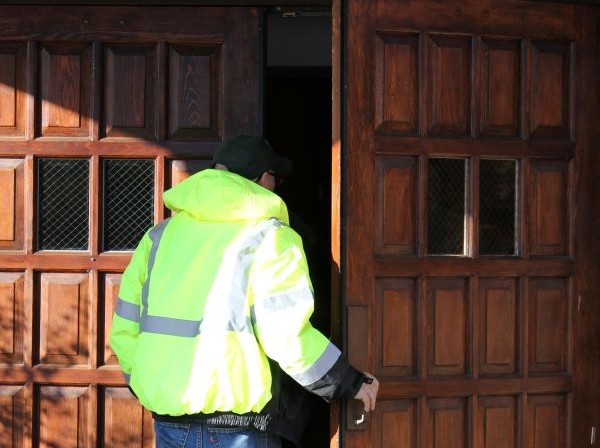Data is King
Access Auditing without Replacing Mechanical Locks is the Answer
One of the most appealing aspects of a completely digital access control system is visitor and staff access traceability. However, just because many commercial sites do not now have such a system in place, and a vast number of them are unlikely to have it in the future (due to the cost), doesn’t imply they should remain in the dark about who, when and at what time someone entered their premises.
Plus, let’s not forget that physical keys are still used across the board for building access. If only there was a way of knowing when the building was unlocked and how long the visit took… This is particularly relevant for the after-hours services like security patrols responding to alarms, cleaners entering premises after everyone has left, and even reactive maintenance engineers gaining entry in the event of an emergency.

Some of the benefits of our key management systems, which enable digital access control data capturing at a fraction of the cost and without the need to replace locks or even doors are highlighted below:
- Keys are stored in a commercially graded key safe (with unrivalled security rating!) at the point of entry.
- The app is used to open a key safe and access keys by authorised individuals only.
- The platform allows managing multiple properties, users and their access.
Now, let’s have a look at a few critical aspects, as well as some brief case studies, to see why the data element is so important in key management.
1. MUST HAVE: AUTOMATIC DATA UPLOADS
At Keynetics, we believe in complete automation; every time a key safe is opened using the app, the visit data is immediately uploaded to the platform and ready for reporting. There are no extra steps and no hassles, just real time data.
This is particularly relevant for multi-site operations and remote site locations! Here is a story for you that demonstrates the opposite:
A similar key safe solution by a different manufacturer is available on the UK market with claims of full access traceability. However, all access to key safes is with code input only, so in order to transfer data to the platform, an audit app must be used at the location. Even if every user had the app, there would be two actions required during each visit: use the code to obtain keys, and then use the app to submit the data to the platform.
However, how often would the visitor fail to complete the second step? What if they are only had a code for key access and not the app? What if there were hundreds of locations (potentially remote) across the country with visits taking place regularly… someone would need to travel around with the app “touching” each box! That sounds like an extra job in itself!
So, whichever system you adopt, make sure it provides real-time data reporting, or you may face logistical challenges of data collection post-factum.

2. ACCESS DATA AS CRIME LOG
Here is a true story for you; access data obtained through our system has been used as evidence in theft prosecutions.
An individual, who was authorised to use one of our key safes for specific visits, returned and used it to gain access to premises and take something that did not belong to them.
Since there were no traces of a break-in, it was a straightforward process of running an access audit on our platform and spotting anomalies in key safe usage. We’re not sure how this particular story ended, but we hope all the goods were returned and justice was served!

3. LOCKING ONE OUT: REVOKING ACCESS IN SECONDS IS AS IMPORTANT
Referring to the story above, it is possible to prevent such incidents by instantly revoking access from those who should no longer have access to premises. There could be various causes for this, including employment termination or even company restructuring with teams moving to a different area or job function.
Regardless of the reasons, revoking access is often as important as granting it, and the speed of action can be critical!
With mechanical key safes, a visit must be made to the key safe to change the code manually.
SentriGuard allows platform administrators to revoke app access in just a few clicks!

4. PROOF OF SERVICE DELIVERY
Would you like to know how much time a contractor spent on site when visiting after-hours? Not a problem! Not only does our system record entry and exit times, but it also allows app users (the contractor in this instance) to upload photos and notes about their visit and the job. Such data eliminates any disagreements about time on site and service delivery.
Furthermore, because keys are stored at the point of entry and clear instructions on their access are given, there should be no more missed visit charges from contractors! A Keynetics’ customer, which heavily relied on third party contractors for property repairs across over 2,000 estates, reported a 90% reduction in missed visit charges!

5. THE BIGGER PICTURE
However, access data can be used in many more ways! Here are just a few real-life examples from our clients.
A client of Keynetics used the system for the “lock and unlock service” provided by their security company. Using the access data on the platform, they were able to establish a considerable reduction in CO2 emissions (and quantify the value!) since the guards were no longer required to collect keys from a central location, they were able to reduce their mileage.
Another customer worked together with Keynetics to track key safes that had been installed but hadn’t been used for an extended periods of time. This allowed those key safes to be removed and redeployed at different locations, which is cost-effective and also environmentally friendly.
Access control and data can benefit your business in so many ways…
If you would like to learn more of what SentriGuard could do for your business, click here.
